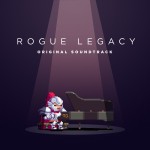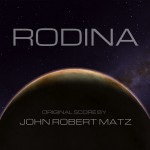
One of the things that’s been a growing issue for me with Triple A games is the method in which orchestral music is used. There’s been a tendency in recent years to have the music of these games mimic the scores of big budget hollywood movies. The approach certainly works for certain types of games, but the pervasiveness of this trend has gotten to the point of being cliche. I’m all for dark, dramatic, and symphonic music finding an audience through games. The problem for me has been that it has become an over-saturated genre.
Luckily, a few soundtracks have come out that spice up the tonal palate of their orchestral music. One such soundtrack from this past generation was the Rayman Origins OST. While it was orchestral and had some dramatic moments, it also had a signature sound. Written by composers Christophe Heral and Billy Martin, the soundtrack was lively, eclectic, and was the breath of fresh air that the orchestral soundtrack genre needed. It wasn’t long before the game’s sequel, Rayman Legends, came about and both composers returned for the second round. In this review I’ll be looking at the Rayman Legends OST and examining how they’ve improved things and how well the music works with the game. Read on to find out more.
Much like its predecessor, the Rayman Legends OST contains a wide variety of music styles and catchy tunes. A number of melodies from Rayman Origins sneak their way into the soundtrack, particularly from the Origins “Jibberish Jungle ~ Advancement” and “Desert of Dijiridoos ~ Shooting Me Softly” tracks. What helps keep the soundtrack sounding fresh is the variety instruments. Your standard orchestral ensemble and jazz ensemble is present, but some oddities add to the music’s quirky and upbeat sound. Some of these include the kazoo, ukulele, theremin, and bagpipes. A number of electronic instruments are also introduced later in the soundtrack, particularly for the stealth level tracks. It all adds up to an eclectic collection of music that fits perfectly for this wild and zany game.
The variety of music works well to match the unique levels and worlds of the game. The opening world Teensies in Trouble involves exploring castles, so many tracks like “Medieval Theme” and “Medieval Dragon” have either a medieval or celtic score arrangement. More often there ends up being a hybrid mix of instruments and styles in the tracks, which helps keep the music interesting and exciting. “Castle Invadid” serves as a great example. Starting off with a rock drum beat and a catchy bass riff, it’s soon joined by ukelele, kazoo, and whistling before switching to a more celtic/medieval style ensemble at the very end.
Later levels, like Fiesta De Los Muertos and 20,000 Lums Under the Sea introduce a few more music genres into the soundtrack. The former has a blend of mariachi music and latin american instruments thrown into the mix, while the latter takes on the sound of a James Bond score, complete with jazz ensemble and a healthy does of electronic instruments. The Fiesta De Los Muertos world is themed around party food and colorful skeletons, and the celebratory mariachi influenced music matches the environment perfectly. The 20,0000 Lums Under the Sea world in contrast has a dark dreary atmosphere that seems to take some visual inspiration from games like Bioshock. This world’s gameplay features stealthily sneaking by lasers and alarms, so the Bond style heist music is a great touch. While the music for this world uses a fair number of electronic effects and guitars, the it also included some interesting instrument choices like beatbox vocals and a few eerie theremin melodies.
Another highlight of the game is the music levels. These are levels which have been designed to sync to a specific piece of music. They operate much like a stage of Bit Trip Runner, requiring you to be constantly moving and dodging obstacles in time to the music. Sadly there are only a handful of these levels in the game, but each one is a blast to listen to and to play through. The level Mariachi Madness was actually featured in one of the game’s trailers.
Yes, that is a mariachi band arrangement of “Eye of the Tiger.” These levels are easily one of the major highlights of the game, especially if you have the musical sensibilities for the timing. One of my favorite music level tracks is “Grannies World Tour” featuring music from the final level of Rayman Origins, a piece which is written in the style of Ennio Morricone’s The Good, The Bad, And The Ugly soundtrack. This version does lean more heavily on the rock aspects than the original, but the piece is still a blast to listen to. Unfortunately a few of the pieces for these levels, including the above “Eye of the Tiger” track, did not make it into the official soundtrack. This is likely due to licensing issues for the songs. The two that are present on the soundtrack are “Orchestral Chaos” and “Grannies World Tour,” both composed by Christophe Heral. It’s a shame that some of these tracks aren’t in the OST, but in all honesty the best way to experience them is by playing the game itself.
The Rayman Legends OST is a great collection of music that spans multiple genres and brings a great amount of liveliness into an already engaging game. The music elevates the atmospheres of the game’s wild and crazy worlds and helps give them their own identity. While there is plenty of catchy orchestral tunes incorporated throughout the soundtrack, the inclusion of other genres and instruments including mariachi bands, ambient electronic music, and big band jazz help add to the soundtrack’s eclectic variety. The later worlds like Fiesta De Los Muertos and 20,000 Lums Under the Sea definitely benefit from the inclusion of these other genres. It’s easily one of my favorite Triple A game soundtracks from 2013. Definitely give this one a listen, if you haven’t already. The Rayman Legends OST can be purchased on iTunes or on Amazon.
Tags: Billy Martin, Christophe Heral, Jazz, mariachi, Music Reviews, Orchestral, Rayman Legends, Review, Reviews, Soundtrack







































